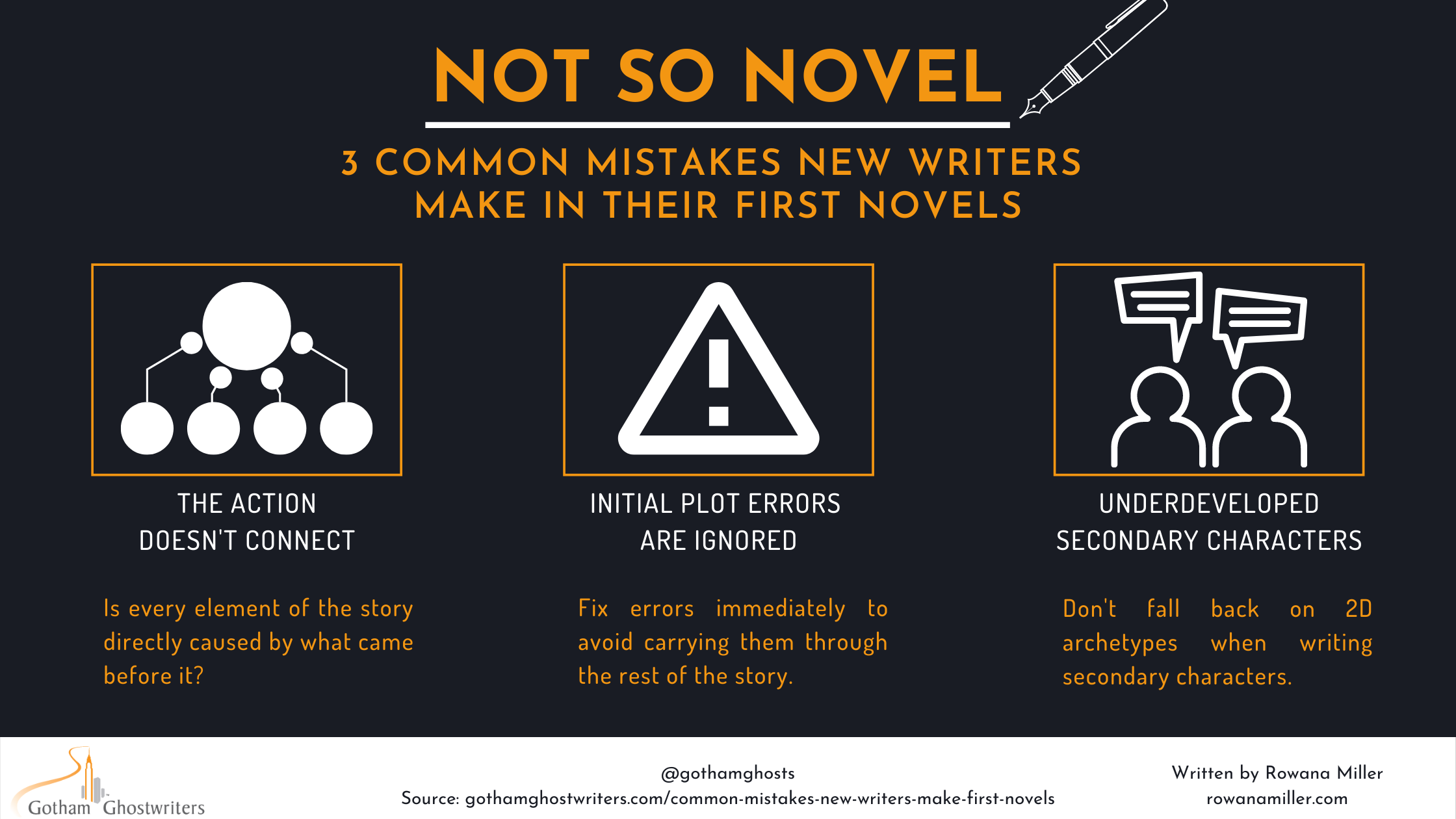I wrote my first novel with zero planning: no outline, no character notes, no book-specific Spotify playlist. I thought you had two choices in the plotter vs pantser divide: either map out your novel scene-by-scene, or go into your first draft without any idea what happens after Chapter 1. And because I found detailed outlines constraining, I decided that I belonged in the latter category. But that made my writing sloppy, often in ways I didn’t expect.
It’s sometimes difficult to identify the mistakes that stem from poor planning. As a result, the first step to correcting them is knowing what they look like. So here’s what to look out for, and some suggestions for how to balance plotting with pantsing to help you fix your first-draft mistakes.

Mistake #1: The action doesn’t connect.
Say you’re writing a middle-grade fantasy. In your opening chapter, your main character — who wants nothing more than to get a lead in her school musical — finds a gem that transports her into a parallel universe where no one has voices. She’s stuck there! And she can’t sing!
There’s something a little off about this setup. Why? Because the different elements don’t have much to do with each other. Some of it builds on what came before: the main character’s lead-role desire invites conflict even if she has her voice, and then losing her voice exacerbates the conflict exponentially. But… a gem? That’s too random. Why would our aspiring performer just happen to find it? She needs to find the object because of who she is, not out of coincidence. It would probably make more sense for that object to be a microphone that she finds while looking for sheet music in the drama closet. This object is on-brand for her life, plus the situation exists because of the preexisting conflict.
While you’re planning your action and/or drafting it for the first time, step back to ask: is every element of the story directly caused by what came before it?
Mistake #2: Letting your plotting errors carry forward into the following chapters instead of fixing them immediately.
Let’s keep going with the gem/microphone change. After writing just the first chapter, it’s a simple fix: rewrite that particular scene. But if you haven’t figured out exactly what’s wrong about the gem moment, just that there’s something not working, you might decide to move on and figure it out in your second draft. In doing so, though, you’ll carry that error into the rest of your story — and that will be significantly more difficult to revise. Maybe you’ll get to Chapter 12, realize that you never explained the gem, and write a meandering plot twist about how all vocal cords have gems in them and the way for the main character to return to the regular universe is by finding the Vocal Cord Gem Cave and chomping down on all the stalagmites until she swallows the one that fits perfectly in her throat, and, and, and…
Even without an outline, the work that you do in your first chapters is an implicit plan for what comes next. So if there’s something off, pause to figure out what it is, and change it now.
Mistake #3: Only developing your main character and leaving your secondary characters as 2D archetypes.
We’ve talked a lot about Voiceless Performer MC. But what about everyone else? Is the MC’s drama rival as talented in the voiceless universe as she is in the voiced one, and if so, how does that talent manifest itself differently? Is the MC still as close with her younger brother now that they aren’t bonded by their shared love of spoken word poetry?
Especially if you’re barrelling through your first draft, you might not ask these questions. You might default to sketches of characters with the intention of filling them in later (see: Mistake #2). This leaves your world flat. The rival stays snooty, with a slight, unrelenting edge over the MC until the MC completes her growth in the end; the younger brother is doe-eyed and boring in both universes.
As you write, pay more attention to these characters. Maybe do some side-writing from their perspectives: journal entries, childhood memories, scenes from your book as if these characters had been the ones narrating the story. You do this naturally for your MC, which is why she’s often easier to develop into a complex character. It takes more active effort to do the same for the others.
I didn’t realize the importance of planning until I wrote my third novel. During that writing process, I directly targeted these mistakes and solidified the plotter-pantser middle ground that works best for me. I’ve found that brainstorming lists and side-writing are my favorite planning strategies, and they’ve helped me find success; I’ve queried each novel I’ve written, and while my first novel didn’t even garner a partial request, my third landed me three offers of representation. But different strategies work for everyone — I think the key is getting to know yourself. I still don’t have a Spotify playlist.
Author
-
Rowana Miller is a city-based college student who writes twisty YA. Some things she loves to read and write about (although maybe not encounter): witches, anonymous letters, rivalries, dad jokes, mind games, dark forests late at night, 24-hour diners, ghosts, kickassery, and the sensation of feeling uneasy without knowing why. Visit her website at rowanamiller.com.
View all posts
